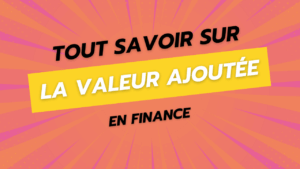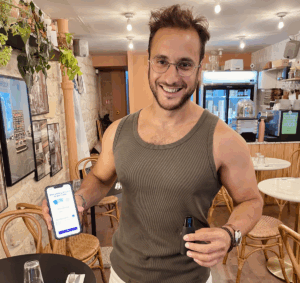You manage the communication of a brand, an association, a brand, a restaurant or simply one of your customers, and you are looking for ideas to improve the support of your brand on social networks, increase the number of subscribers, the reach of your posts and generate interaction.
Whether on Instagram, Facebook, Tiktok, Twitter, Linkedin or YouTube, here is my top 10 best tips linked to promoting your brand on social networks and more generally on the web. These tips are based on my fifteen years of experience and entrepreneurship on the Internet, from my first HTML websites in 1998 until the arrival of social networks and today the advent of the video format.
And contrary to what many people promote, I am going to defend a return to basics in terms of communication, far from the automated, time-consuming, outsourced and terribly boring publications that we see popping up everywhere on all networks... The last advice may surprise you! Ready ? Let's go.
Note: This chapter is the 11th in a series of course on Social Media, the summary of which can be found here.
Some reminders about the most viral content
Even though this data dates from several years ago, it gives a small idea of the types of media that are most effective depending on the desired objective.
In terms of sharing, the image is in pole position, because it is (was) the simplest and most basic media to share with your friends.
Then comes the video (which must have since supplanted the image format with the advent of real and shorts), then to a lesser extent the text then link format.
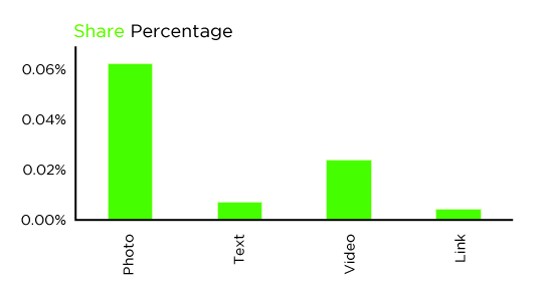
The text, whether written black on white, or written on an image, is the most commented on media:
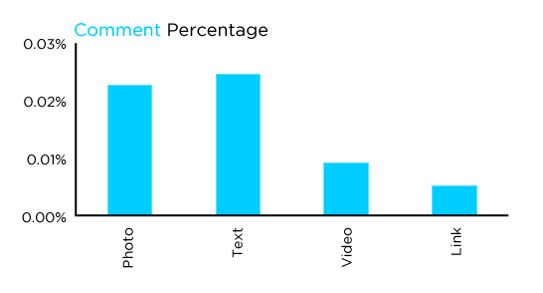
Finally, the image takes over in terms of “likes”, followed by the text (we think of positive statuses, encouragement, “have a good day” and other jokes). The link is always in last position, its engaging nature requiring the opening of a new window on an external page which can chill the user.
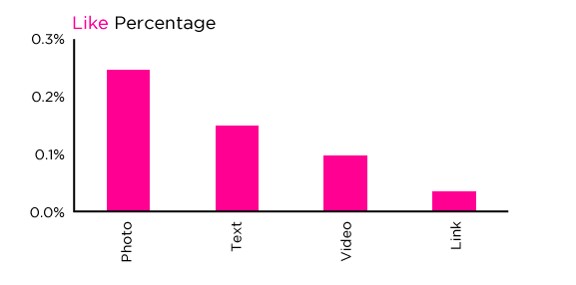
Good times to post on social media
Key days of the week to publish content
Several studies have highlighted relatively similar results, where Sunday appears to be the most interesting day in terms of virality and impact. Brands therefore have opportunities to seize on the weekend, when there are fewer publications and more people connected and available to interact, like or share a publication.

This is the reason why a consensus was created around Sunday especially for content creators on YouTube, most of whom publish their most important videos on that day, which on the one hand creates a synergy and an interesting emulation that we can take advantage of (a sort of digital catchment area), and on the other, creates a sometimes counterproductive rush which alters the availability of the Internet user who quickly becomes saturated.
Key times of the day to post on Facebook
Furthermore, studies have shown that late morning and late afternoon or early evening appear to be the moments when publications have the greatest success.
Which ultimately corresponds to the break before lunch, where employee productivity begins to decline, and the end of the day, towards the end of their work when they cannot yet leave the office. Moreover, this corresponds to times when blood sugar levels are generally lower. Finally, this can also correspond to the moment when Internet users are on the move in transport, after leaving the office or work.
Using the publication scheduling option in order to appear during these key moments is therefore recommended.
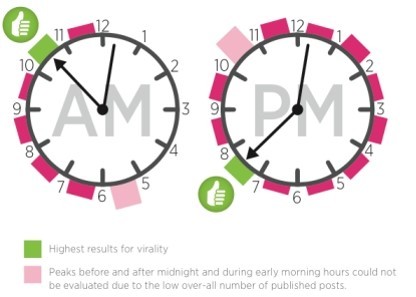
How to effectively manage your social networks?
For a while, it has become extremely difficult for content creators and brands to stand out on social media. In fact, information has become so invasive that there is too much content for a limited audience which is already taken by storm. Not to mention the algorithms that restrict a lot of content that it possibly deems not relevant enough.
The current strategy of most small structures is to either publish almost nothing on social networks because it does not bring enough tangible results, either publish time-consuming content and quite automated, which has the effect of boring consumers, and not having the expected reach in terms of audience and interaction.
To solve this problem, here is the 10 ideas that I think worked the most, and which have proven to be the most differentiating when managing a company's online communication. Obviously, you are free to make them your own, adapt them to your situation, and suggest others in the comments of this article!
1/ Share content exclusive to your community
Today, the news is the same everywhere. You will therefore have no added value in sharing content present everywhere else, especially if you are late on the news. The best way to stand out, create buzz, collect like and subscribers consists of offering content as exclusive as it is authentic, and which is of certain interest to your fans or your future subscribers.
When you want to publish so-called exclusive content, ask yourself if it meets the following two conditions:
- Is this content related to my activity?
- Is it of significant interest to the consumer?
If both conditions are met, then it’s a safe bet that your content will get people talking and increase your visibility.
Examples of content that is very popular with Internet users:
- for an e-commerce site, discount coupons ;
- for a job site, job advertisements;
- for a real estate rental site, the latest operations carried out or better yet, the finished projects of clients who have gone through this agency with pretty photos ;
- for a thematic news site, information before everyone else, offbeat information or better yet, qualitative specialized information;
- in general: an unusual photo or video not seen elsewhere, or an exclusive phrase reserved for your activity but which brings added value, such as for example a simple recipe to reproduce at home in the case of a restaurant or a chef profile.
Practical case: the Var Gendarmerie on Facebook
The Var Gendarmerie was one of the first law enforcement forces to use social networks to create buzz while promoting dialogue with public opinion, and all while giving a positive image of its work, this which is a “strike” in terms of communication.
To do this, she started communicating on Facebook about the preventive checks she planned to carry out.

A bold initiative which made it possible to strengthen the proximity between gendarmes and citizens and to encourage dialogue, and which increased the number of subscribers while allowing media advertising at lower costs.
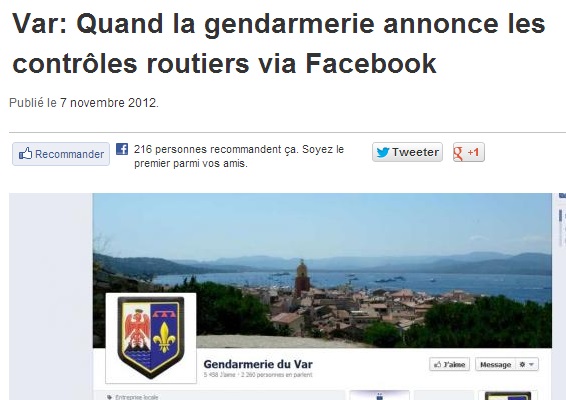
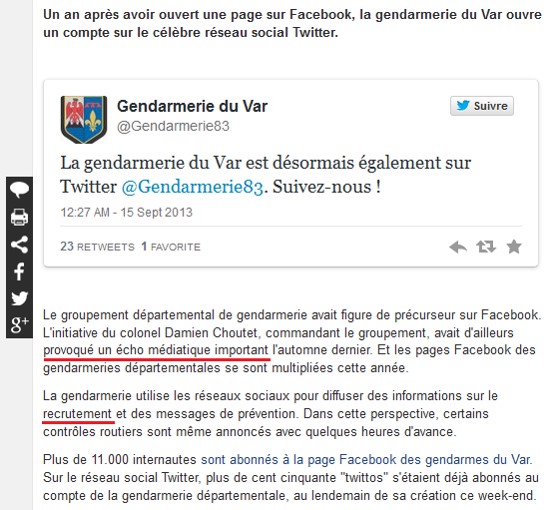
This case is a good example because the content published was exclusive, and subscribers had the privilege of benefiting from exclusive and profitable information.
This kind of content can be transposed to other activities (for example, an exclusive discount reserved for Instagram subscribers for a restaurant) is a very interesting way to pay your followers, while gaining popularity.
2/Make nods to the news
If you're not a general news outlet, occasionally do a link to the news by publishing, for example, the clip of a celebrity whose birthday it is, or a humorous image with viral reach, is an excellent way to communicate and exist in the eyes of subscribers.
Example: a karaoke has every interest in bouncing back on musical news, not by relaying general musical information, but by having the right word at the right time about news related to music, and via a text which encourages subscribers to interact.
This allows you to create a bond with your fans on relatively universal things. Obviously favor big positive news.
Example, still in the case of karaoke: “Today is Rihanna’s birthday. What do you think is his best song ever? »
The idea in this example is to collect as many comments as possible and create interaction with subscribers.
3/ Favor positive content
In a catchy and authentic tone, you can aim for unusual or moving content. Unless it is your core business (press for example), avoid angry subjects, and concentrate on what can cause positive emotions or mobilizing among your fans: unusual or moving content, photos that are easy to like (dishes, animals, exploits, beautiful photos), all while playing on emotion.
But be careful, beware of bad buzz!
An example here, this publication from the Caisse d'Epargne on its Facebook page, where we see an animal hanged by the parties, the whole being captioned with the following mention:
“Because accidents don’t just happen to other people”
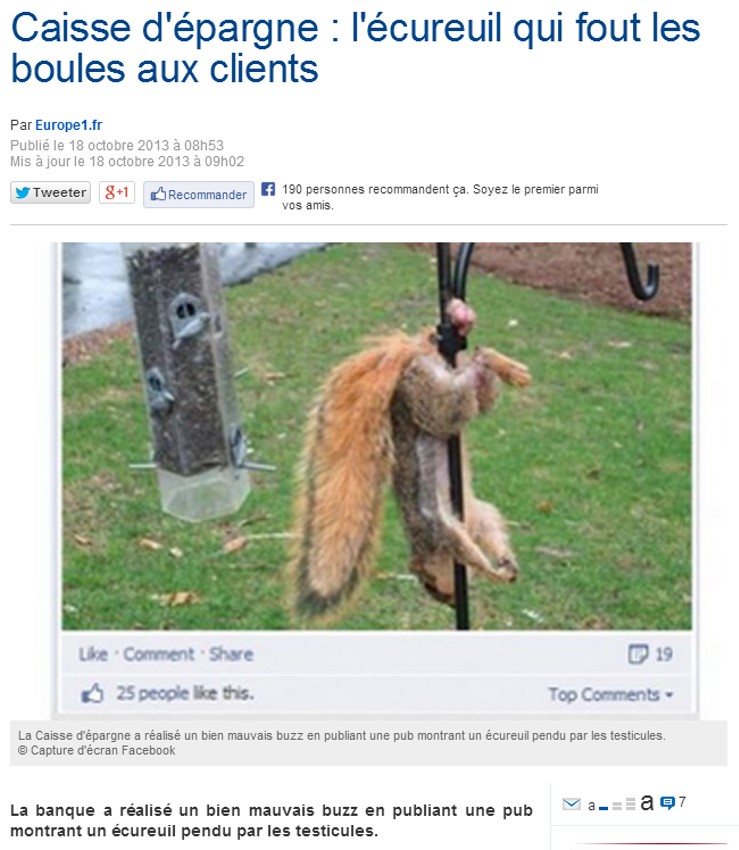
This publication which promoted one of the services of the Caisse d'Epargne – insurance for life's accidents – and which was not at all to the taste of public opinion, which did not hesitate to openly criticize the brand. Between the poor treatment inflicted on the animal, and the image sent back by the bank (some customers saw this as a metaphor for what the bank thinks of its own customers), the Caisse d'Epargne immediately reacted and was confused. in sincere apologies.
“We wanted to use the codes of social networks, we made a mistake,” recognized the Caisse d’Epargne. “It’s a communication error, we offended fans and potential customers. We regret it. »
This immediate and empathetic reaction has been analyzed as very good crisis communication management by gender specialists, see the Galliano case.
4/ Be short and relevant
We are quickly tempted when we manage a brand's page to want to talk at length about the new product available for sale, or the new recipe. But the problem is that Internet users are bombarded with information and they don't have the time to read it all.
Not only must everything be focused on the image, the video or the very short text (which can be written directly on a photo), but also, the media description, call to action or whatever is text underneath should be as concise as possible.
So avoid large blocks of text (except in the very specific case of a Linkedin publication which aims to make the Internet user read a long text with a view to a text at the end), and favor a catchy tone.
Example for a pastry on Instagram: a tempting close-up photo of the last pastry, with a clear, simple and clear mention of the type below “Who would you like to share our new chocolate-caramel-pistachio éclair with? Available now in store. Link to the e-shop in organic to have it delivered, -5€ on your first order with the promo code INSTAGRAM ».
5/ Get fans involved
One of the best ways to increase your popularity on social networks, it's from engage subscribers in asking them for their opinion. Everyone likes to be challenged in terms of their self-esteem, and you need to be able to take advantage of that as a content creator.
In practice, this can be done by asking open questions to your community, in the description of an image or publication, or by doing a poll in story.
Although their answers may surprise you, the immediate goal is not necessarily to collect information but rather to create a bridge between your brand and your consumers.
However, it is about asking them questions that are really likely to sharpen their curiosity and their desire to answer. So if you ask them if they prefer this or that product in your catalog, it may not resonate, unless you are an extremely well-known brand with a big impact in terms of product on consumers (big mac VS Royal Deluxe for example…).
Conversely, you can ask them the question of knowing if they would prefer to pay less delivery costs in exchange for a longer delivery time, or if they would prefer pay 10% more so that this or that product uses this or that component – or ingredient for a restaurant – deemed more qualitative.
This type of question is directly linked to their way of consuming your product, and there is a greater chance that they will interact on this type of subject – especially when it concerns their wallet – than on their preference between this or that product already available. the map.
In short, the primary objective is not necessarily to integrate this new component, because there are a thousand and one reasons why in the short term, you will not be able to accede to this type of request. Nevertheless, it’s a first step taken towards your consumers, and one thing leads to another, you might well, when it is possible for you, start to make their requests a reality.
Short term, you send a positive image, you show that you are attentive to their expectations and above all, you create interaction with your subscribers, which is extremely beneficial from an algorithmic point of view!
6/ Create recurring appointments
These kinds of techniques are particularly useful for video content creators. Imagining a weekly or monthly meeting, not only does it allow to establish a sort of rigor in your organization in terms of communication, but in addition, it allows you to more and more visible and create a sort of addiction on the consumer side.
So, here are some meeting ideas that could be unexpectedly successful:
- a monthly podcast on the release of your new products and services, or on changing consumer trends in your sector;
- a weekly video advice related to the use of your products and services ;
- for a restaurant or cook account, highlighting a recipe to reproduce at home;
- for a printing company, weekly practical tips, e.g. on the layout, the association of colors or even the meaning of this or that type of font, etc…
The ideas are endless, the hardest part is getting started, but in the logic of offering free content with a call to action behind it, there is nothing better than offering “freemium” content to your subscribers in order to grow your community. It certainly requires a lot of work, but the return on investment in the medium and long term is absolutely invaluable.
7/ Ask riddles
In the form of a recurring meeting for example, asking your community fun riddles is one of the most effective techniques in terms of interactivity.

The multiple responses thus lead to several positive effects:
- a better image for newcomers on your social network accounts, which note the existence of an active community, which makes them want to subscribe;
- a greater rate of interaction with your community, which increases the value of your page in the eyes of the algorithm ;
- THE feeling of belonging to a community from your consumers.
In short, a virtuous circle that benefits your business.
8/ Relay articles from your blog or related blogs
By relaying articles posted on its corporate blog, or those posted by bloggers linked to its activity (or even by bloggers approached by our brand to test our products), you feed content considered “exclusive” for your community, this which differentiates your fan page from that of your competitors.
This is particularly useful for corporate businesses on Linkedin or Twitter, but unexpectedly, such a strategy can also be very powerful on Instagram, Tiktok or YouTube, trying if your sector of activity allows it, to animate a kind of press review, via screenshots posted on Instagram, or short video formats for YouTube, Instagram and Tiktok to follow up on the news published on your blog, always in relation to your activity.
In short, if you have the resources, becoming your own media will allow you to be even more visible on the Internet without having to go through intermediaries.
9/ Take care of the presentation of your posts
When we publish a post on LinkedIn, Facebook, etc. we are quickly tempted to dismiss the matter and return to our activities. Gold, a well-presented post is much more likely to be shared and commented on.
In practice, this involves deleting the link that you have just copied and pasted into the Facebook or Linkedin publication space (which will include the link below in the form of a clickable image), then by personalizing the message located above but also below the thumbnail image. Finally, the choice of thumbnail is allowed by most social networks, so if the automatically chosen image is not suitable, do not hesitate to change it.
The other technique is to “tease” the content of the post, for example by not revealing all the information. For a brand doing a promotion for example, this could consist of writing “This promo code that you won’t soon forget…” with an eye-catching image and a link to how to use this promo code directly in store for example.

10/ Talk to your community and do it with a good heart
This is probably the strangest and yet least respected piece of advice currently in the world of communication. Most brands, including small brands, have an extremely polite image on social networks. Never a wrong word, photos taken by professionals, a perfect caption, and in the end, communication that rings false.
If we take restaurants for example, the publication format is always the same: a well-polished photo, a description that revolves around self-promotion with the systematic reminder of the address, and a long list of meliorative adjectives.
The problem is that when everyone starts doing this, no one stands out. To take the example of a restaurant, here are some ideas that could work, and which I will leave to you to transpose to other sectors:
- the brand would have everything to gain from get out of the box, and to offer its loyal customers the opportunity to follow the brand on the networks not only for take advantage of the latest offers, but also and above all for know the daily specials in advance. And of regularly publish the dish of the day, its story in 3 words and the reason why we chose it;
- the restaurant can also publish photos or videos taken on the fly from its suppliers, when choosing fish or meat for example, in order to send a transparent and above all positive image of the products used;
- for a more “fast food” brand, the restaurant could very well choose an internal ambassador who would present the latest camera offers, the new fashionable drink, etc… ;
- finally, nothing prevents a quality restaurant to propose from time to time recipes, advice for better pairing a particular dish with a particular wine, or to explain why he chose this alternative flour instead of another…
In short, in reality, there is no shortage of ideas and this is about play the game of transparency : everything that comes to mind, from ideas for new à la carte recipes to the most time-consuming tasks (such as supplier purchases) can be “story-told” in a way that tell a story to your customers. You can even publish content relating to your partnerships, your collaborations, your relationship with your suppliers, in short, the idea being to showcase your professional legend.
It's almost about getting closer to reality TV, obviously keeping a distance between reality and what you choose to publish. So of course, it will annoy more than one person, because it is a job sometimes considered egocentric and almost embarrassing, but once we have mourned our self-esteem, we realize that the use of networks can represent an undeniable key success factor in the success of your business.
Also, it is not a question of being false, but of speaking and to communicate with the heart, and less with digital tools programmed, planned and free of all humanity. In short, digital is there only to help humans, and not to replace humanity.
Bonus: some other tips in bulk
Use hashtags in the right place, interact, answer questions, thank Internet users, remain cordial in the face of criticism, respond to Google reviews, rely on the community to deal with trolls, be firm in the face of law breakers, respond with intelligence, respect, good-natured humor and the general public!

